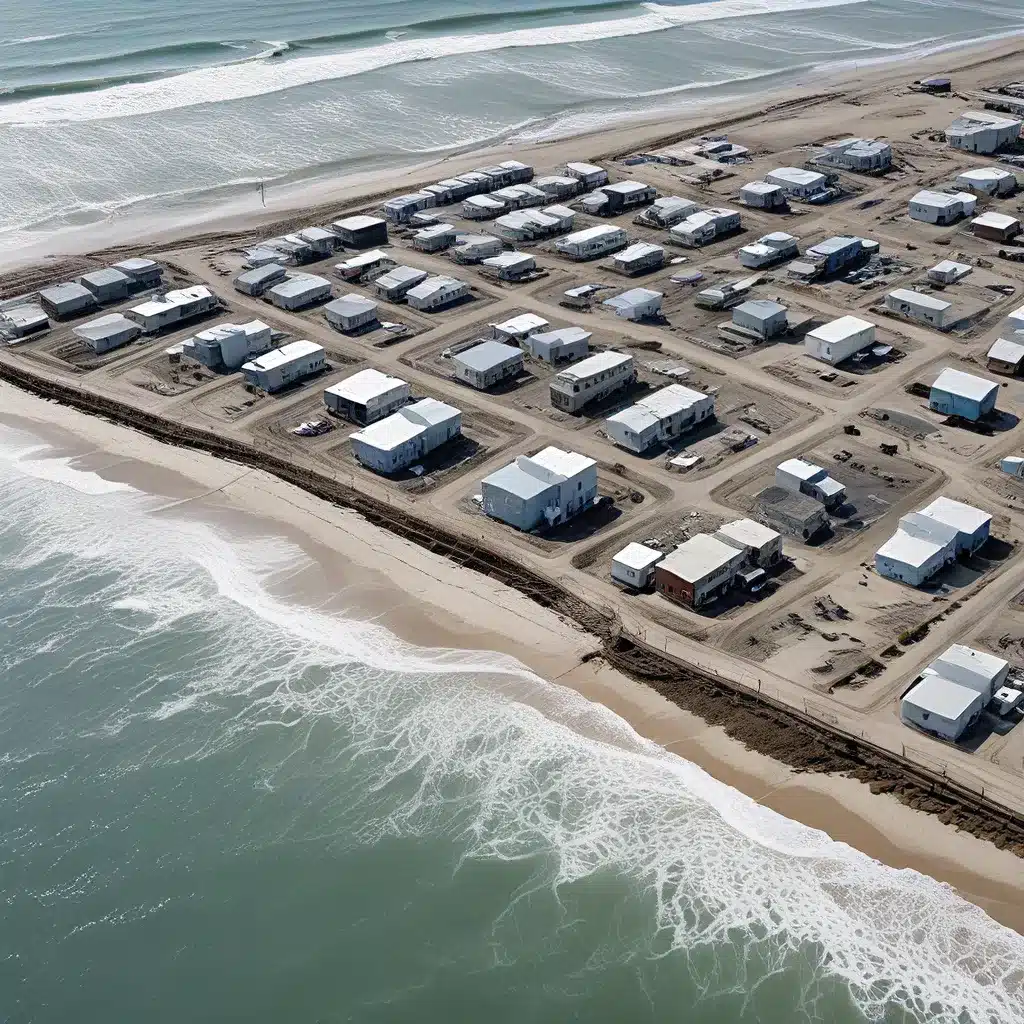
Surfing the Tides of Adversity: How Water Systems Keep Communities Afloat
Remember that fateful day when a natural disaster struck your community? The power went out, the water stopped flowing, and panic set in. How did your local water treatment facility respond? As it turns out, the unsung heroes of water infrastructure play a crucial role in helping neighborhoods weather the storm and bounce back stronger than ever.
Let’s dive into the waves of resilience that water treatment professionals ride to support community disaster recovery. Drawing insights from the Federal Emergency Management Agency (FEMA) and the Environmental Protection Agency (EPA), I’ll share how these dedicated teams navigate the turbulent tides of crisis to keep essential services flowing.
Safeguarding the Lifeblood of Communities
When disaster strikes, the first order of business is maintaining a reliable supply of clean, safe water. FEMA training materials highlight the critical importance of water treatment facilities in this regard. These facilities are the backbone of a community’s infrastructure, acting as the lifeblood that keeps hospitals, firefighters, and residents afloat.
Imagine a scenario where a hurricane has knocked out power and flooded the local water treatment plant. The facility’s team must spring into action, rapidly deploying backup generators and mobilizing emergency water purification systems. Their mission? To ensure that vital services like dialysis, handwashing, and firefighting remain available, even in the face of catastrophe.
The EPA’s America’s Water Infrastructure Act (AWIA) mandates that community water systems serving over 3,300 people develop detailed risk and resilience assessments. These assessments identify potential threats, from natural disasters to malicious attacks, and outline emergency response plans to safeguard the water supply. By anticipating and planning for the worst, water treatment professionals can proactively fortify their systems against calamity.
Weathering the Storm: Hardening Infrastructure
When disaster strikes, water treatment facilities must be able to withstand the onslaught of Mother Nature. This is where the concept of infrastructure hardening comes into play. FEMA’s National Preparedness Report highlights the importance of reinforcing critical infrastructure, such as water treatment plants, to ensure they can continue operating during and after a crisis.
For example, elevating essential equipment and backup generators above flood levels can prevent water treatment systems from being crippled by rising waters. Implementing robust cybersecurity measures can also safeguard against malicious actors who might try to disrupt digital control systems. By proactively hardening their infrastructure, water treatment professionals can ensure their facilities remain operational and able to serve the community, even in the face of adversity.
Restoring Hope: Rapid Recovery and Rebuilding
When the storm clouds part and the floodwaters recede, the real work of community recovery begins. And at the heart of this effort are the water treatment professionals who work tirelessly to restore essential services.
Imagine a scenario where a devastating tornado has left homes and businesses without running water. The water treatment team must prioritize which areas to bring back online first, focusing on critical facilities like hospitals and fire stations. They’ll need to assess damage, repair broken pipes, and disinfect the water supply to ensure it’s safe for consumption.
The FEMA National Preparedness Report underscores the importance of this rapid recovery process, noting that the quicker essential services can be restored, the sooner a community can begin to heal and rebuild.
As the water treatment facility works to get the taps flowing again, they’ll also play a crucial role in the long-term rebuilding efforts. By collaborating with local emergency management, they can help identify and address vulnerabilities in the water infrastructure, ensuring that the system is better equipped to withstand future disasters.
Waves of Resilience: Preparing for the Next Challenge
The journey of community disaster recovery is never truly over. As one crisis passes, water treatment professionals must remain vigilant, constantly improving their emergency response plans and infrastructure hardening efforts.
The EPA’s AWIA guidelines emphasize the importance of periodic risk and resilience assessments, requiring water systems to update their plans every five years. This continuous cycle of evaluation and improvement helps ensure that water treatment facilities are always ready to weather the next storm, whether it’s a hurricane, a cyberattack, or an emerging public health threat.
By embracing a culture of resilience, water treatment professionals can help their communities surf the waves of adversity and emerge stronger than ever. From safeguarding the lifeblood of essential services to rapidly restoring hope in the aftermath of disaster, these unsung heroes play a vital role in the long-term recovery and thriving of our neighborhoods.
So, the next time you turn on the tap and enjoy a refreshing glass of water, take a moment to appreciate the dedicated team of water treatment professionals who work tirelessly to keep your community afloat, no matter what challenges come their way. Their waves of resilience are truly the backbone of community disaster recovery.


